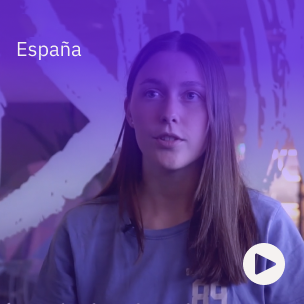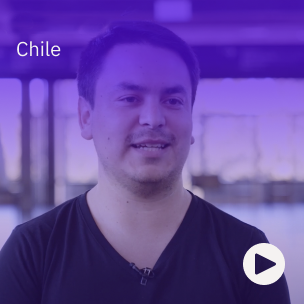Lead Space
Conecta con tu futuro
y crea tu
emprendimiento
Number counters
Pictograms with index
Segunda edición 2023
Países
Alemania, Argentina, Brasil, Chile, España, Estados Unidos, México, Perú, Portugal, Reino Unido y Uruguay
Inscripción
29 de mayo a 1 de septiembre
Programa
25 de septiembre a 17 de diciembre
Países
Alemania, Argentina, Brasil, Chile, España, Estados Unidos, México, Perú, Portugal, Reino Unido y Uruguay
Dedicación
8-10 horas semanales durante 12 semanas
Coste cero
Financiado por Santander Universidades
Formato
Semi-presencial o 100% online en función del centro
XWC CTA
Súmate a la comunidad global de emprendedores
Con Explorer, te convertirás en parte activa del cambio mediante la puesta en marcha de proyectos que impulsarán tu libertad financiera.
Emprende y crea un impacto positivo en el mundo
Doce semanas para transformar tu idea en una solución que contribuya a lograr los ODS 2030.
¿Te ha quedado alguna duda?
Consulta nuestras FAQs para dar respuesta a todas tus preguntas.
Image with index
Mapa

Accordion Tab Group
Perks y beneficios
Valida tu idea
Comunidad Internacional
Certificado de participación
Valida tu idea
CONTENIDO 1
Comunidad Internacional
CONTENIDO 2
Certificado de participación
CONTENIDO 3
Comunidad Santander X
Prepare 2 launch
Talk X
Comunidad Santander X
CONTENIDO 4
Prepare 2 launch
CONTENIDO 5
Talk X
CONTENIDO 6
List with image
Testimonios Alumni
Last 4 Blog posts
Blog
IBM CTA
CTASection
Take the next step
Want to discuss your options with a DevOps expert?
Contact our sales team to evaluate your needs.
Get connected
IBM DevOps partners have a wide range of expertise. Find one to build the right solution for you.
Learn how
Dig into more self-directed learning about DevOps methodologies.
XWC StructuredList
N1
N2
N3
Promoción
Difusión del programa entre tu comunidad de estudiantes, Alumni y otros potenciales interesados durante el tiempo que permanece abierta la convocatoria. Te proporcionaremos un toolkit de difusión con materiales para ayudarte en el proceso, así como acceso a un panel para que puedas seguir la evolución de las inscripciones.
✅
✅
✅
Selección
Te comprometes a seleccionar el grupo de proyectos que estarán participando en Explorer a través de tu institución. Para ello, se proporciona una rúbrica de evaluación que ayuda a identificar el perfil de proyectos que más se pueden beneficiar de un programa como este.
✅
✅
🚫
Coordinación
Una persona de la universidad o institución ejercerá las tareas de Coordinador/a del programa Explorer y acompañará a los estudiantes durante las doce semanas. Se trata de un rol de facilitación, más parecido a un Coach que a un profesor, ya que no es necesario ser un experto en emprendimiento. Con una dedicación estimada de entre 4 y 8 horas a la semana, todos los Coordinadores deben participar en las sesiones de intercambio de buenas prácticas y certificarse a través de las formaciones obligatorias diseñadas desde Explorer. Esta certificación permite, además, ser miembro de la Comunidad de Coordinadores, un grupo de aprendizaje en el que compartir conocimiento con otros Coordinadores de otras instituciones que forman parte de la red Explorer en todo el mundo.
✅
🚫
🚫
ContentBlockSimple
Título del contenido
Do you remember when Ana Carolina Merighe, CTO of Veritise, told us about the mistakes that spoil a pitch? Well, the person leading the pitching webinar also explained the 14 aspects you must tackle in your pitch. Write it down and succeed.
When she detailed the seven mistakes that would ruin your speech, Ana Carolina Merighe, CTO of Veritise, also explained the 14 things you should do in a pitch. Keep them in mind when preparing yours, and be ready to succeed.
- Who is your audience? You have to know who you are talking to and what they are interested in. Many people ignore this point; they just come in and spit out their pitch, and that's the last thing you should do.
- How much time do you have? Condensing everything you have to say into a two-minute Elevator Pitch is different than explaining it calmly if you have an hour. "Even so, don't talk for 60 minutes. No one is going to be that patient. Spend 10 to 12 minutes, leaving the rest to talk to your interlocutor. I'm sure they have a lot of questions to ask you.”
- Give a title. Start your presentation (slides or video) with something simple, such as your startup name, tagline (if you have one) and contact information. Remember these basics.
- Everything in context. Help your audience understand what you can do for them and what solution you offer to their problem. The pitch should notice this. If you don't get it, take a couple of steps back, and think about what needs to be 100% clear and what prevents you from synthesizing. Then, when you figure it out, move on.
- Explain the pain well. A common mistake is creating a solution without a problem to solve. Explorer teaches you how to validate that solution, but you should start with the issue. Use data to demonstrate the extent of pain and point out how to solve it.
- Show your solution. Show the MVP, the prototype, and a video. It is always more effective to show what you have, even if it is not perfect (but present the best you have) than to try to describe it.
- Magic willow. Keep in mind the "magic potion" that differentiates you from your competitors and other similar solutions: your team, the experience others do not have, or the possibility to grow faster than your competition. Think about what will make you a better choice for customers.
- Business model: How will you make profits now and in the future? How will you finance your startup? You must be clear (and, preferably, validated) on this point. Make sure that your way of making money makes sense to your customers. You need to know if they are willing to pay.
- Marketing and sales strategy. Tell what your goal is and how you will achieve it: impact an existing market, create a new one or use pricing as a strategy. You may have the solution to a problem that others already solve, but you are targeting another niche to save on marketing and invest more in engagement. In any case, you have to know which channels and partners you will use, the customer journey of your customers and what data the performance metrics show. Prepare well the answers to possible questions from investors in these sections.
- Competitors. You must know who they are. When someone says there is no competition, they are wrong 99.9% of the time. It is practically impossible not to have competitors; if you have yet to find them, investigate further. If you still haven't identified any, think that someone before you has searched your area for customers or a market.
- Timeline. Make it clear what your next steps are: this way, the potential investor will know where you will spend your capital.
- Financial projections. Don't just ask for an amount of money; explain why and detail how you will use it. This is what an investor wants to know. If you have done the validations right, they will see where you are going. It also tells how the team behind you will help you make it happen. And speaking of which:
- Team. A person invests in you and your team, so you must show that the team can deliver. If you change partners, let your investor know that everything is moving forward and that the new group can do the same as the old one.
- The pitch. Write down these three basic rules: it must be engaging (tell your story without being boring), it has to show you as someone who they can trust (don't pretend or lie, don't expose something that is not real) and it has to be precise (less is more: be brief). Remember to explain things in some detail if asked.
- Who is your audience? You have to know who you are talking to and what they are interested in. Many people ignore this point; they just come in and spit out their pitch, and that's the last thing you should do.
- How much time do you have? Condensing everything you have to say into a two-minute Elevator Pitch is different than explaining it calmly if you have an hour. "Even so, don't talk for 60 minutes. No one is going to be that patient. Spend 10 to 12 minutes, leaving the rest to talk to your interlocutor. I'm sure they have a lot of questions to ask you.”
- Give a title. Start your presentation (slides or video) with something simple, such as your startup name, tagline (if you have one) and contact information. Remember these basics.
- Everything in context. Help your audience understand what you can do for them and what solution you offer to their problem. The pitch should notice this. If you don't get it, take a couple of steps back, and think about what needs to be 100% clear and what prevents you from synthesizing. Then, when you figure it out, move on.
- Explain the pain well. A common mistake is creating a solution without a problem to solve. Explorer teaches you how to validate that solution, but you should start with the issue. Use data to demonstrate the extent of pain and point out how to solve it.
- Show your solution. Show the MVP, the prototype, and a video. It is always more effective to show what you have, even if it is not perfect (but present the best you have) than to try to describe it.
- Magic willow. Keep in mind the "magic potion" that differentiates you from your competitors and other similar solutions: your team, the experience others do not have, or the possibility to grow faster than your competition. Think about what will make you a better choice for customers.
Of course, there was much more: questions from the audience, a review of the most common failures, etc. Check out the video to find out more.
Image
PictogramItem
Lorem ipsum dolor sit amet.
Lorem ipsum dolor sit amet, consectetur adipiscing elit.
ContentItem
Get connected
IBM DevOps partners have a wide range of expertise. Find one to build the right solution for you.





